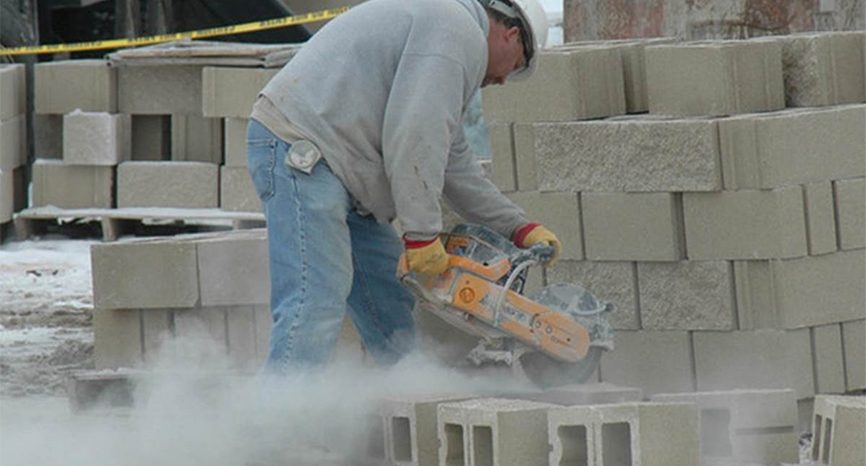As Dust In Case recently discussed, OSHA has introduced revisions to its existing Silica Dust Rules that update standards for modern concrete and general industry to improve the health and safety of workers. Workers using stationary and handheld masonry saws, grinders, tuck-pointing, and other tools that create silica dust are advised to use certain industrial vacuum cleaners that will assist in following these new recommendations. Based on those, which features should those in industries affected by this proposal look for when selecting an industrial vacuum to reduce and contain silica dust? Here are the key features to look for when considering an industrial vacuum purchase:
HEPA Filtration Will Increase Air Purification
According to the revised standards for construction, a vacuum’s main defense against toxic airborne silica dust particles is by using a HEPA filter. HEPA Maxx filters are 99.997% efficient @ 0.3 microns and carry a Merv 14 rating while HEPA 2.0 filters are 99.97% efficient @ 0.3 microns and carry a Merv 17 rating. This offers an additional layer of filtration that purifies air and increases safety by preventing the escape of respirable silica dust from the vacuum exhaust. With Ruwac’s HEPA filters carrying a 5 to 7 year average lifespan, it’s a worthwhile investment for not only workers’ health, but your vacuum’s filter system as well.
Dust-free Emptying Systems Prevents Airborne Dust from Escaping
OSHA’s revised guidelines protect general industry and maritime workers from respirable crystalline silica exposures above the permissible exposure limit of 50 micrograms of silica per cubic meter of air averaged over an 8-hour day. In the construction industry, OSHA requires the use of water primarily to avoid exposure, and if that methods is not used, they, too, are subject to the same 8-hour day exposure limits as general industry.
Chances are you won’t be exposed to 50 micrgrams of silica dust during the disposal process alone, but you’ll still want to ensure your vacuum’s collection and disposal systems minimizes contact with it. Vacuums equipped with collection dust bin assemblies that do not require the use of tools reduce operator exposure with its contents. Ruwac’s portable vacuums are equipped with a low-level. foot-actuated lever that is simple and easy to use. These dust pans allows you to release the bin where dust has already settled, and turn the vacuum back on while avoiding any airborne dust from escaping during the emptying process.
Direct bagging options are also available to ensure workers do not come into direct contact with dust during disposal, but they are not required.
Choose A Vacuum With Primary Filtration That Is Completely Dustless
A vacuum filter such as Ruwac’s industry-leading MicroClean filtration is 99% efficient at 0.5 micron. These primary filters outperform expensive cartridges, reduce maintenance, and cut down on costly filter replacements. They’re also Certified Dustless and include a 3-year filter life guarantee.
Reduce Worker Exposure to Dust With An External Filter Shaker
Vacuums equipped with an external filter shaker allows you to clean the dust cake off the filter from the outside of the machine, thus preventing worker exposure to the filter and materials.
Use a Cyclonic Pre-Separator
A cyclonic pre-separator will improves vacuum efficiency, as systems such as Ruwac’s HEC Series are 95(+)% efficient with submicron particles before reaching the filter. This prevents clogs and extends the life of both the primary and HEPA filters.
Sources:
- OSHA Crystalline Silica Rule: Construction Fact Sheet
- OSHA §1926.1153 Construction Regulations On Respirable Crystalline Silica: Table 1: Specified Exposure Control Methods When Working With Materials Containing Crystalline Silica
- OSHA Crystalline Silica Rule: General Industry and Maritime Fact Sheet


